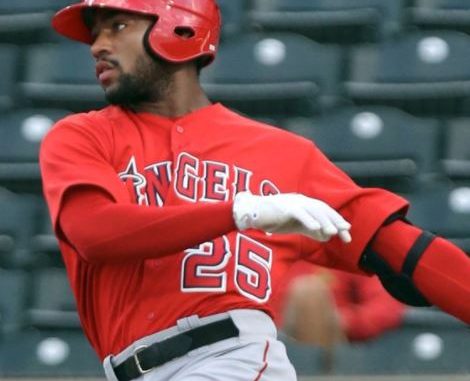
With the first pitch of the 2018 Midwest League season merely hours away, now would be the perfect time to check in on all the teams and see how their opening day rosters are taking shape. Once again the MWL will be loaded with some of the best young players in baseball, including the top four selections of the 2017 MLB draft, so there’s a lot to cover in this piece.
Sixteen teams make up this extremely deep Single-A league and we’ll touch on the key prospects for each club to serve as a primer for the upcoming campaign.
Beloit Snappers (Athletics)
Austin Beck, OF – Beck was the sixth overall selection of the 2017 amateur draft and offers elite bat speed, plus speed on the bases and the tools to be a star in either center field or right field depending on how his bat develops. His ability to handle breaking pitches and hit for a reasonable average will determine his progress through the A’s system.
Nick Allen, SS – Selected in the third round in 2017, Allen’s glove is where he’ll make his mark as a professional. He projects as a .280ish hitter and his 5-9 frame will make it difficult for him to make power an effective tool. He’s at least four years away from an Oakland debut, which gives him time to refine his hit-tool and showcase his speed which may ultimately let him stick as a middle infielder.
Bowing Green Hot Rods (Rays)
Brendan McKay, LHP, 1B – The fourth overall pick in 2017 spent last year at short-season Hudson Valley and proved to be an asset on both sides of the ball. As a hitter he produced a 123 wRC+ and slugged four home runs, while pitching to a 1.80 ERA and putting up an impressive 28.8 strikeout rate. He’ll continue to work as both a pitcher and hitter in 2018 given his success as a two-way player in the New York-Penn league.
Austin Franklin, RHP – The Rays took Franklin with the 90th overall pick in 2016 due to his solid low-90s fastball and above average curve. He’ll continue to work on a changeup to add to his arsenal, while chasing the control necessary to advance to the next level. If he can’t master a third pitch, the worst case scenario is probably a future role in the Tampa Bay bullpen.
Burlington Bees (Angels)
Jo Adell, OF – The tenth overall pick of the 2017 draft wasted no time in showing why he was so highly coveted. In 49 games of rookie ball, Adell slashed .325/.376/.532, while clubbing 5 home runs. He also added 8 triples and 8 steals to produced a .242 ISO over his final 31 games. Most impressive was his improvement in plate discipline as he cut his strikeout rate from 24.2% in Arizona to 18.9% in the Pioneer League. The MWL will be a major step up in competition, but his raw power and plus speed should give the Angels a good luck at a potential future middle of the order bat.
Brandon Marsh, OF – After missing the entire 2016 season, the 20 year-old Marsh returned to action in 2017 and dominated the pitching in the Pioneer League, producing a .944 OPS over 39 games. The 6-4, 210 lbs former second round pick offers elite athletic skills and an above average arm that could play in right field if needed. He’s a little behind in his development due to injuries, but if his approach improves with time 25-30 home run power is within reason.
Cedar Rapids Kernels (Twins)
Royce Lewis, SS – Lewis finds himself returning to the MWL to open 2018, which might come as a surprise to most as he hit .296/.363/.394 in 80 plate appearances with the Kernels last season. He won’t turn 19 until June so the Twins plan seems to be one of patience with the top dynasty prospect from his class. Armed with plus-plus speed and enough raw power to rack up a 117 wRC+ in the Gulf Coast League, Lewis also blasted 3 HR and swiped 15 bags in just 36 games. The skill set suggests that his stay in the MWL might be brief as a promotion to the Florida State League seems imminent.
Alex Kirilloff, OF – After being selected 15th overall in 2016, Kirilloff missed the entire 2017 season after undergoing Tommy John surgery last March. Word around the prospect world is that he’s added 30 pounds of muscle since 2016, which will only enhance his plus raw power. He’ll need to find his swing after the long layoff, but when he couples that with his advanced plate approach he projects out as a middle of the order big league hitter.
Clinton LumberKings (Mariners)
Oliver Jaskie, LHP – The 6-3 University of Michigan product stands out as the LumberKings top arm in the rotation to begin 2018. Jaskie made 10 starts for Everett of the Northwest League in 2017 where he continued to work on his fastball/change combination that might eventually land him at the back end of a big league rotation where he projects as a number four or five starter. He’ll need to refine his slider (which is below average at the moment) to offset the lack of movement on his fastball which sits in the 89-91 mph range.
Dayton Dragons (Reds)
Hunter Greene, RHP – Greene, along with Brendan McKay collected a lot of buzz before the 2017 draft due to their ability to perform as two-way players. Unlike McKay, Greene will be used exclusively as a pitcher at Low-A Dayton according to Reds senior director of player development Jeff Graupe. Velocity is not a problem for Greene as his fastball sat in the 99-100 mph range during his three starts in the Pioneer League last season. At 6-foot-4, 197 pounds, Greene has some evaluators calling him the most athletic right-hander to come along in 20 years. Like most young arms, his secondary offerings need refined, but nonetheless, Greene could be a fixture at the front end of the Reds rotation for years when everything comes together.
Fort Wayne (Padres)
MacKenzie Gore, LHP – If you’re in the proximity of any MWL stadiums and you have a chance to catch Gore in action, act fast because he’s most likely on the fast track to Double-A sooner rather than later. Gore has the makings of an elite talent and possesses a mid 90’s fastball which he used to strike out five or more batters in five of his seven rookie ball starts. Gore’s unique, straight leg kick, which he repeats with ease adds to his prowess on the mound, while his plus curveball is an obvious indicator that he’ll accelerate through the minor league ranks.
Gabriel Arias, INF – Arias should be familiar with Fort Wayne as he played 16 games for the TinCaps last season. He’ll need to work on his hit tool if he wants to advance this season as his 25% strikeout rate and lowly 3.1 walk rate need improvement. His 6-1, 185 pound frame along with his advanced footwork make him a candidate to be a power-hitting shortstop at the big league level.
Esteury Ruiz, INF – Used primarily at second base for the Royals’ rookie level Arizona affiliate, Ruiz was traded to San Diego last July where the consensus is the Padres fleeced the Royals out of a top-tier prospect disguised as a secondary piece. Ruiz slashed .419/.440/.779 with three home runs and nine steals in 21 games in the AZL, where he also slugged .602. He’s been compared to Javier Baez by some evaluators and that’s certainly something to get excited about in dynasty circles.
Great Lakes Loons (Dodgers)
Carlos Rincon, OF -Rincon will make an encore appearance in the MWL to start 2018 as he played in 87 games with Great Lakes last season. The power is apparent as the 18 HR in 370 plate appearances indicate, but he struggled with plate discipline as he produced a 39.3 percent strikeout rate. Still only 20 years-old and measuring in at 6-3, 190 lbs, Rincon profiles as plus-power, corner outfielder as he progresses through the minors.
Kane County Cougars (Diamondbacks)
Brian Shaffer, RHP – Arizona selected Shaffer in the sixth round of the 2017 draft. He possesses an intriguing combination of size (6-5, 200) and velocity as his fastball can reach the mid 90’s. His changeup is a plus offering with fade and he creates great deception with his arm speed. If he can manage to find at least an average slider, Shaffer could be on his way up the minor league ladder very soon.
Lake County Captains (Indians)
Nolan Jones, 3B – The Indians second round pick (55th overall) in 2016 has a plus arm with elite accuracy and athleticism that will allow him to stick at the hot corner for years to come. Jones led the New York-Penn League with a 173 wRC+ and even more impressive was the fact that he was the league’s second youngest hitter. His ability to exhibit patience at the plate and spray the ball to all fields is a trait most young hitters struggle with, but Jones’ knack for the aforementioned approach has placed him ahead of his peers at the early stage of his career.
Lansing Lugnuts (Blue Jays)
Samad Taylor, 2B – At just 19-years-old, Taylor made three stops during his first year of pro ball and he was able to acquit himself extremely well. In just 52 minor league games in 2017, Taylor racked up six home runs, 30 RBI and 26 runs while slashing .294/.335/.436. Demonstrating his ability to hit for average, while possessing a quick bat will go a long way in his development as a professional hitter.
Peoria Chiefs (Cardinals)
Alvaro Seijas, RHP – Signed as an international free agent in 2015, Seijas was just 16-years-old when he entered the Cardinals’ organization. He may be small in size (5-8, 175), but Seijas produced an impressive 8.9 K/9 in the Appalachian League, while making every scheduled start. His velocity sits at 91-94 mph on his fastball, but he’ll have to improve his curveball and changeup to increase his success in the Midwest League.
Quad Cities River Bandits (Astros)
J.B. Bukauskas, RHP, – Coming in as the 76th overall prospect according to MLB Pipeline’s Top 100, the University of North Carolina product owns a heavy, sinking fastball that sits in the mid 90’s and a mid 80’s slider that are well on their way to being plus pitches at the big league level. Houston will need him to develop a third offering in the near future or Bukauskas’ future might be in the bullpen.
South Bend Cubs (Cubs)
Jose Albertos, RHP – The only question about Albertos’ development into a number two or three starter in the big leagues is how quickly he can begin to command his pitches. Scouts have tagged him as below average at the moment in that category, but the upside here is tantalizing. He owns a plus fastball, plus changeup and his breaking ball is at the border of plus-ville as well. He’s had a string of minor arm issues as well, so he’ll have to prove he can handle a starter’s workload if he wants to advance.
West Michigan Whitecaps (Tigers)
Joey Morgan, C – Whether Morgan stays behind the dish as he advances levels is a conversation for another day. His bat however, is what plays here. The home run numbers won’t be eye-popping, but his gap power will provide enough offense to keep him in the lineup on a daily basis.
Wisconsin Timber Rattlers (Brewers)
Tristen Lutz, OF – Milwaukee made Lutz the 34th overall selection in last year’s draft and he proved right away why he was so highly touted. Lutz slashed .311/.389/.559 between two rookie league teams, while slugging nine home runs in just 40 games played. At just 19-years-old, Lutz must improve his plate discipline (27.6% strikeout rate), while displaying the physical tools against a more seasoned group of players in the Midwest League.
Even Baseball America’s Josh Norris agrees with me on the MWL talent:
The Midwest League as a whole is going to be lousy with talent this year. Hunter Greene (Dayton) MacKenzie Gore (Fort Wayne, probably), Bukauskas and Matijevic (Quad Cities), Royce Lewis (Cedar Rapids), Nolan Jones (Lake County) among others.
— Josh Norris (@jnorris427) April 1, 2018
Article featured image of Jo Adell – courtesy MLB Pipeline on Twitter
I call Fort Wayne, Indiana home and spend more time than I'd like to admit cheering on the TinCaps every summer at Parkview Field. I'm infatuated with all things baseball and am currently on a quest with my family to attend a game at all 30 MLB ballparks within the next few years. Wish me luck. I'm a bit too analytical at times, in fact, you could say I have a rather unhealthy relationship with wOBA, which makes wRC+ insanely jealous. I'll be covering the Midwest League for Prospects1500.

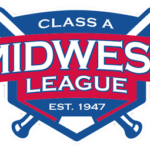
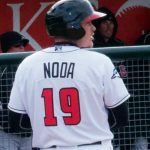
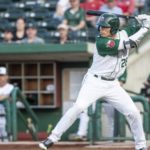
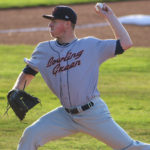
Leave a Reply